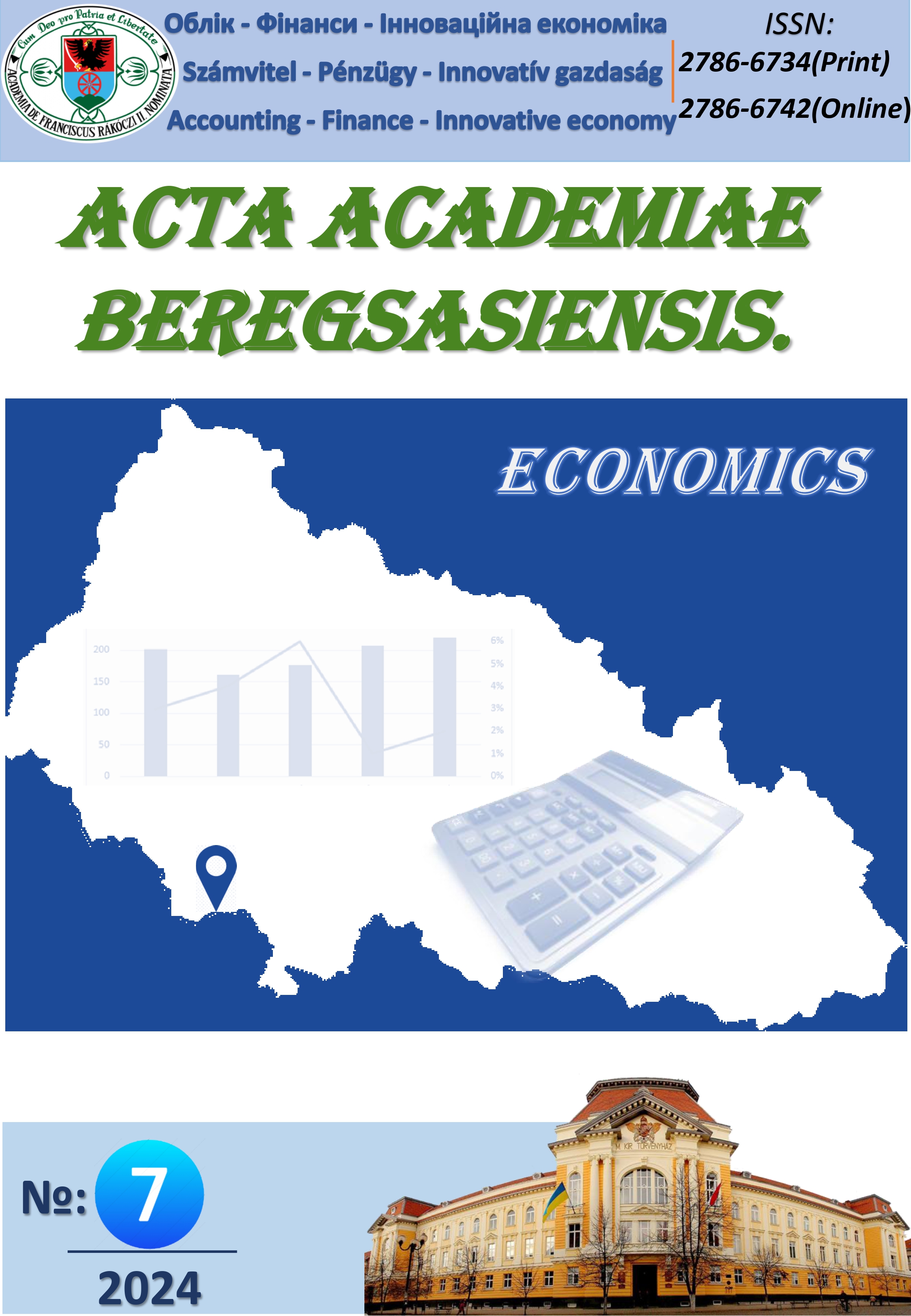Market Evolution and Consumer Trends in Poland's Confectionery Industry
DOI:
https://doi.org/10.58423/2786-6742/2024-7-275-287Keywords:
confectionery market, market conditions, development, status, infrastructure, consumption, exports, importsAbstract
The Polish confectionery market is considered to be one of the most developed and dynamic markets in the world. But in recent years, the Polish food industry has faced a sharp increase in production and marketing costs, disruptions in the supply chains of raw materials, consumables and packaging, as well as the loss of traditional sales markets due to the war in Ukraine. The study of the peculiarities of the Polish confectionery market made it possible to assess the main indicators of the Polish market of confectionery goods of all categories, as well as its volume and trends.
The article analyzes the situation on the Polish confectionery market, including production, export, import, consumption, geographic location of the market, levels of competition and development of the market's production and transport infrastructure. It was concluded that during 2022 there was a 12% increase in the volume of production of confectionery goods of all categories. At the same time the manufacture of Polish flour confectionery products increased by 19.3%. The growth rates of production of cocoa–rich and sugar sweets were 3.8% and 6.8%, respectively. About 50–70% of manufactured products are exported by Polish manufacturers. It is necessary to mention that during 2022 a record number of products were exported from Poland, exceeding the similar figures of the previous year by 13.8%. Meanwhile, despite the presence of developed domestic production of confectionery goods in Poland, the volume of imported supplies traditionally remains high and increased by 7.8% in 2022. At the same time, the level of competition in the Polish domestic market for flour, cocoa–rich/chocolate and sugar confectionery products is estimated as high. The level of the market's production and transport infrastructure is rated as developed.
References
Arkolakis, C. (2010), Market Penetration Costs and the New Consumers Margin in International Trade. Journal of Political Economy, Vol. 118, N. 6, Pp. 1151–1199, URL: https://doi.org/10.1086/657949 DOI: https://doi.org/10.1086/657949
Baldwin, R., Harrigan J. (2011), Zeros, Quality, and Space: Trade Theory and Trade Evidence, American Economic Journal: Microeconomics, 3 (2), Pp. 60–88, URL: https://doi.org/10.1257/mic.3.2.60 DOI: https://doi.org/10.1257/mic.3.2.60
Bernard, A. B., Redding, S. J., Schott, P. K. (2011), The Quarterly Journal of Economics, Volume 126, Issue 3, Pp. 1271–1318. URL: https://doi.org/10.1093/qje/qjr021 DOI: https://doi.org/10.1093/qje/qjr021
Comite, F. Di, Thisse, J.–F., Vandenbussche, H. (2014), Verti–zontal differentiation in export markets, Journal of International Economics, Vol. 93, Issue 1, Pр. 50–66 URL: https://doi.org/10.1016/j.jinteco.2014.01.010. DOI: https://doi.org/10.1016/j.jinteco.2014.01.010
Eckel, C., Neary, J.P. (2010), Multi–product firms and flexible manufacturing in the global economy, Review of Economic Studies, Vol. 77, Issue 1, Pp. 188–217. URL: https://doi.org/10.1111/j.1467–937X.2009.00573.x DOI: https://doi.org/10.1111/j.1467-937X.2009.00573.x
Flach, L., Unger, F. (2022), Quality and gravity in international trade, Journal of International Economics, Vol. 137, 103578. URL: https://doi.org/10.1016/j.jinteco.2022.103578 DOI: https://doi.org/10.1016/j.jinteco.2022.103578
Hallak, J. C., Sivadasan, J. (2013), Product and process productivity: Implications for quality choice and conditional exporter premia. Journal of International Economics, Vol. 91, Issue 1, Pp. 53–67 URL: https://doi.org/10.1016/j.jinteco.2013.05.001 DOI: https://doi.org/10.1016/j.jinteco.2013.05.001
Johnson, R. C. (2012), Trade and prices with heterogeneous firms, Journal of International Economics, Vol. 86, Issue 1, Pp. 43–56 URL: https://doi.org/10.1016/j.jinteco.2011.09.004 DOI: https://doi.org/10.1016/j.jinteco.2011.09.004
Melitz, M. J., Ottaviano, G. I. P. (2008), Market Size, Trade, and Productivity The Review of Economic Studies, Vol. 75, Issue 1, Pp. 295–316, URL: https://doi.org/10.1111/j.1467–937X.2007.00463.x DOI: https://doi.org/10.1111/j.1467-937X.2007.00463.x
Nes, K., Ciaian, P., Marcantonio, F.Di (2021), Economic determinants of differences in the composition of seemingly identical branded food products in the EU, Food Policy, Vol. 100, 102020 URL: https://doi.org/10.1016/j.foodpol.2020.102020 DOI: https://doi.org/10.1016/j.foodpol.2020.102020
Tereszczuk, M. (2019). The Polish food products on the foreign markets, Ekonomika APK, 26(4), Pp. 89–96. URL: https://doi.org/10.32317/2221–1055.201904089 DOI: https://doi.org/10.32317/2221-1055.201904089
Venger V., Romanovska N., Chyzhevska M. (2022). Integration of Ukraine to the Global Value Chains. Comparative Economic Research. Central and Eastern Europe Volume 25, Number 2, 2022. P. 137–161. URL: https://doi.org/10.18778/1508–2008.25.17 DOI: https://doi.org/10.18778/1508-2008.25.17
Downloads
Published
Issue
Section
License
Copyright (c) 2024 Vitalii Venger, Nataliia Romanovska, Andrii Ramskyi, Oleksandr Sheiko

This work is licensed under a Creative Commons Attribution-NonCommercial 4.0 International License.
Authors retain copyright and grant the journal right of first publication with the work simultaneously licensed under a Creative Commons CC BY-NC License.


